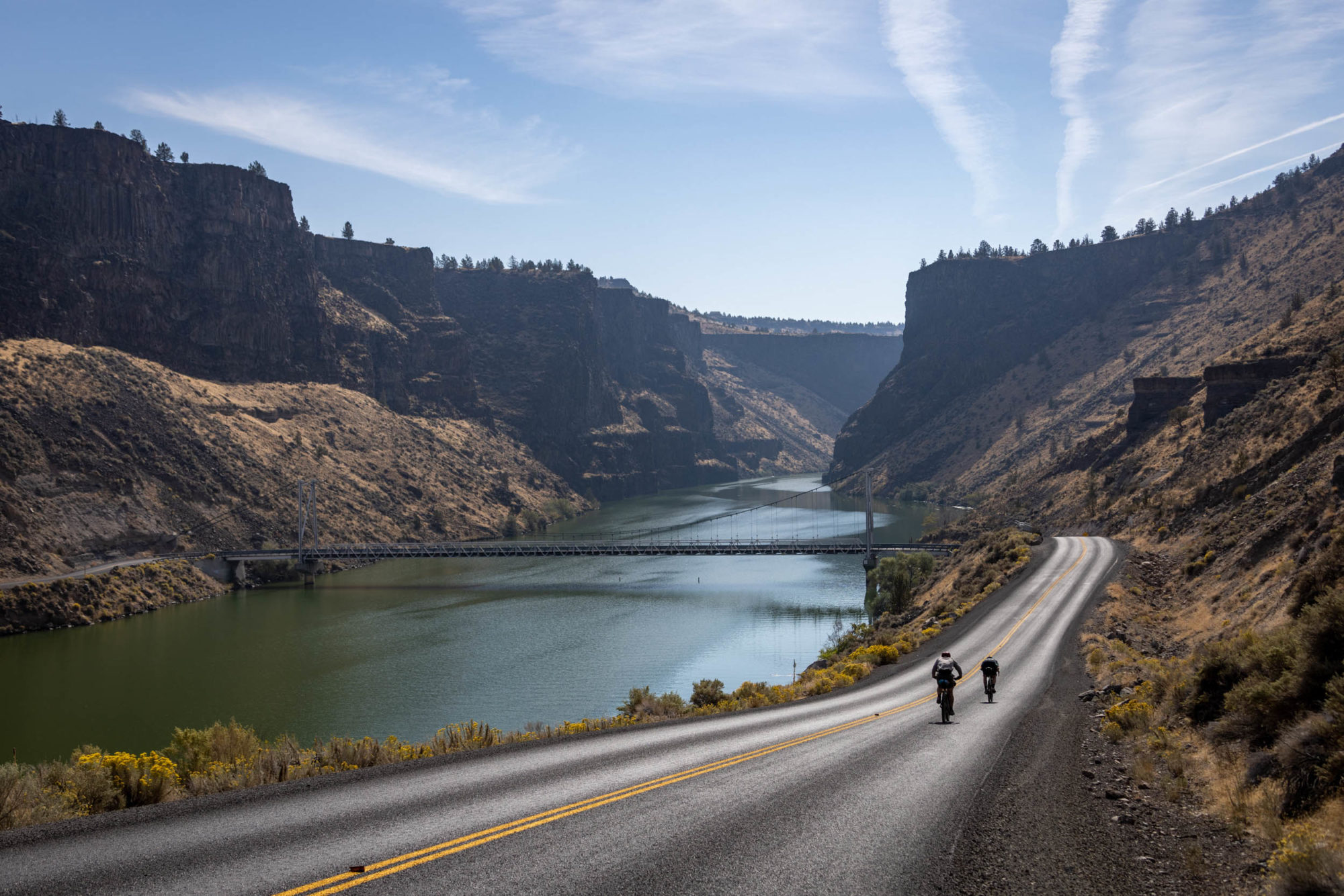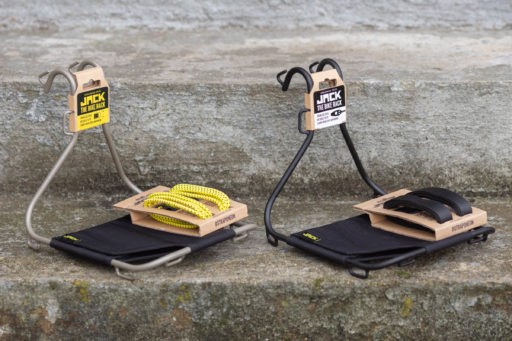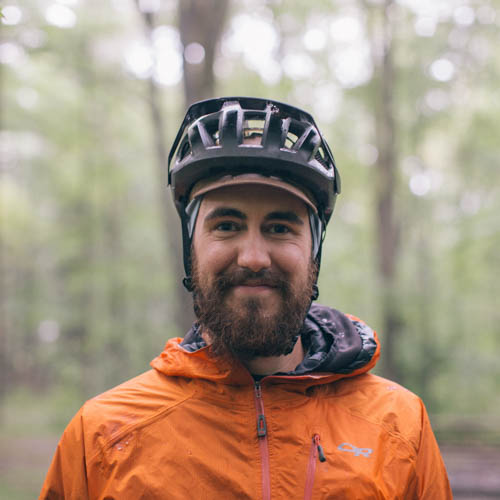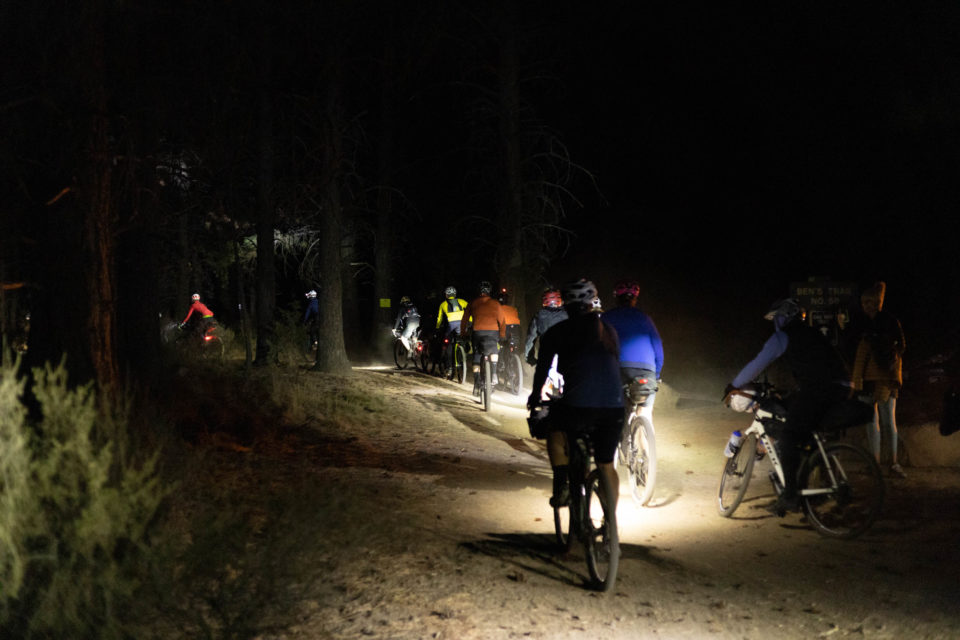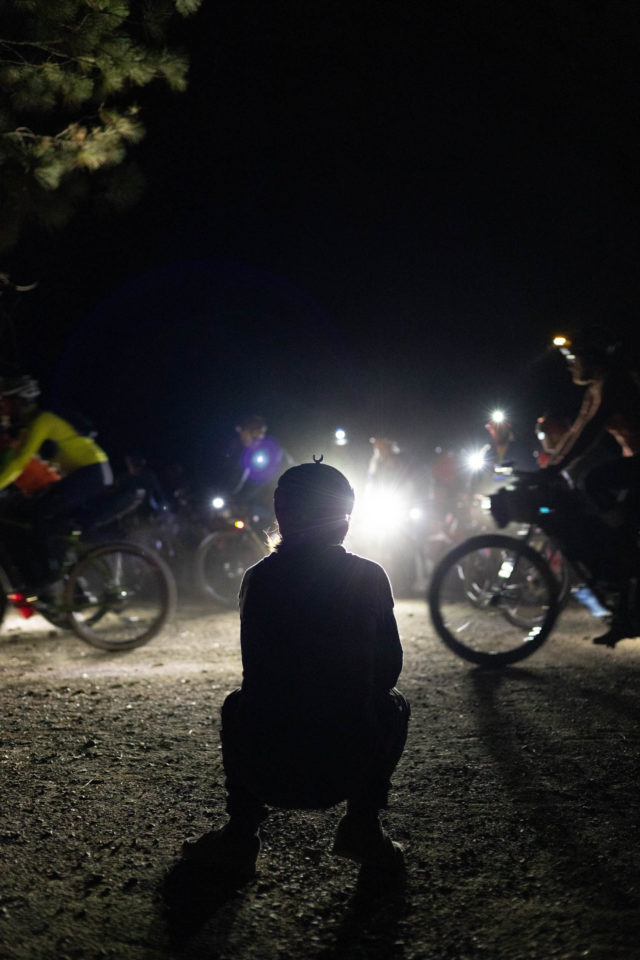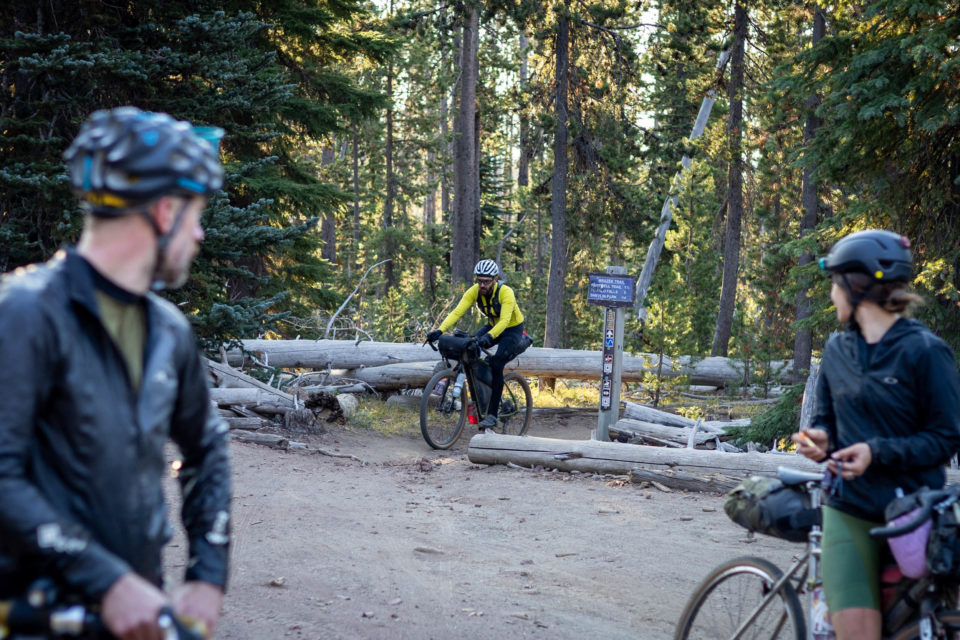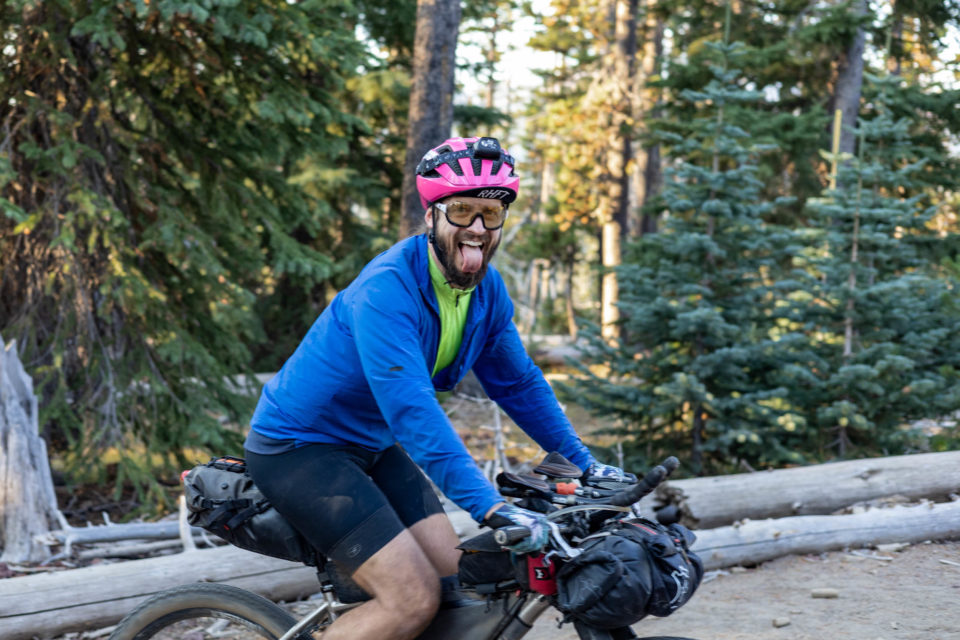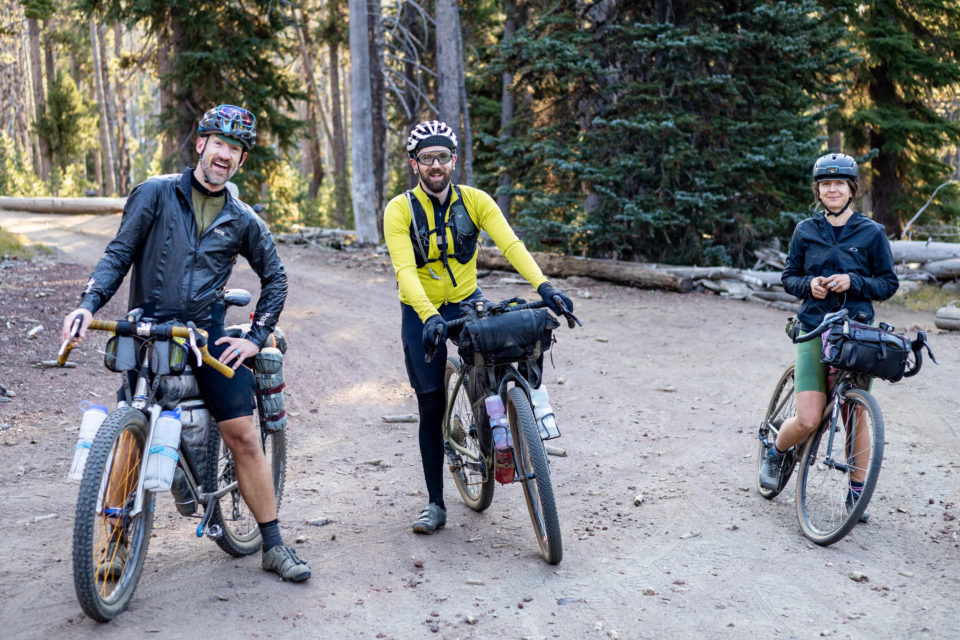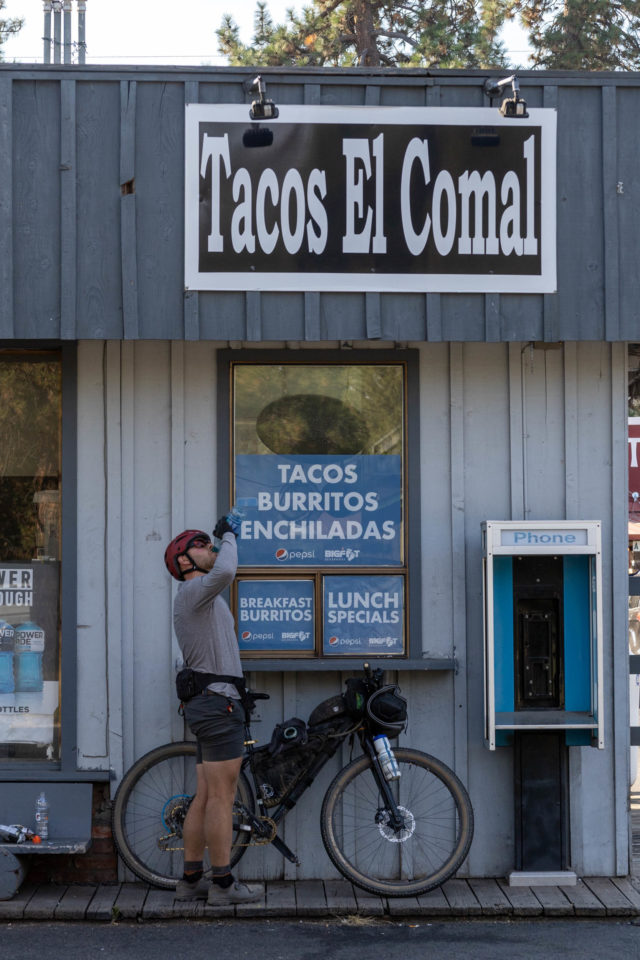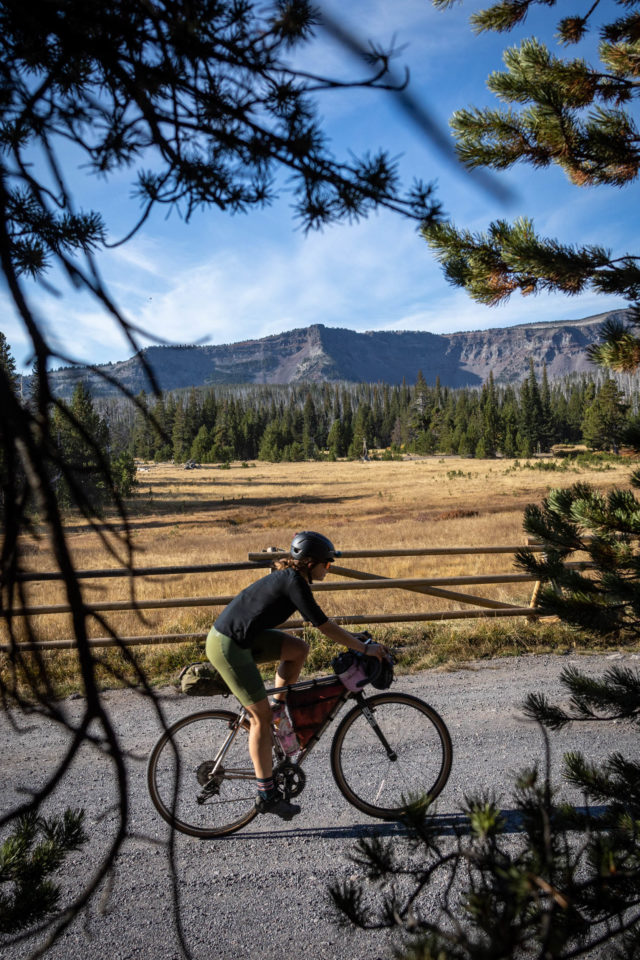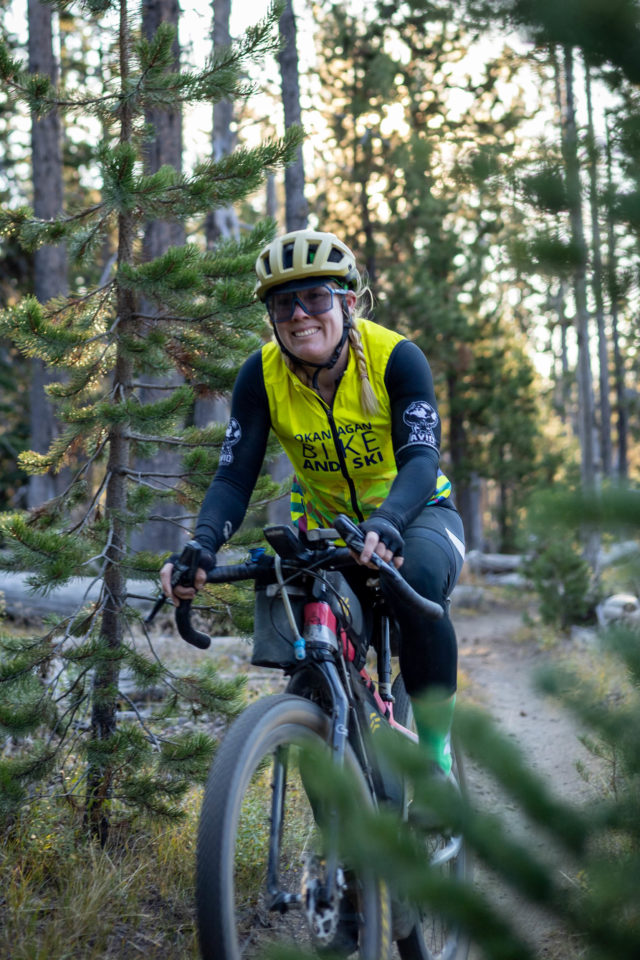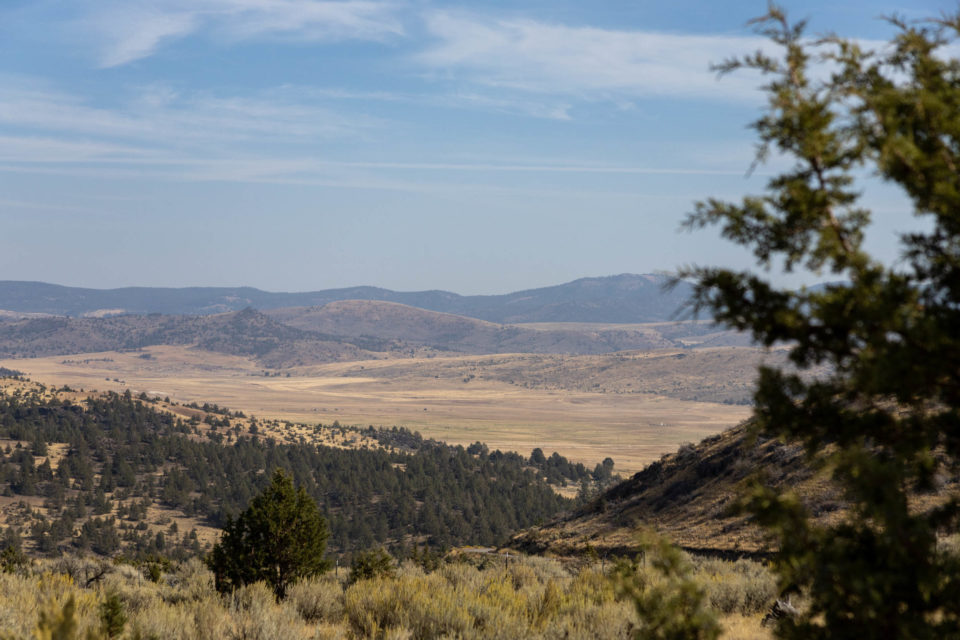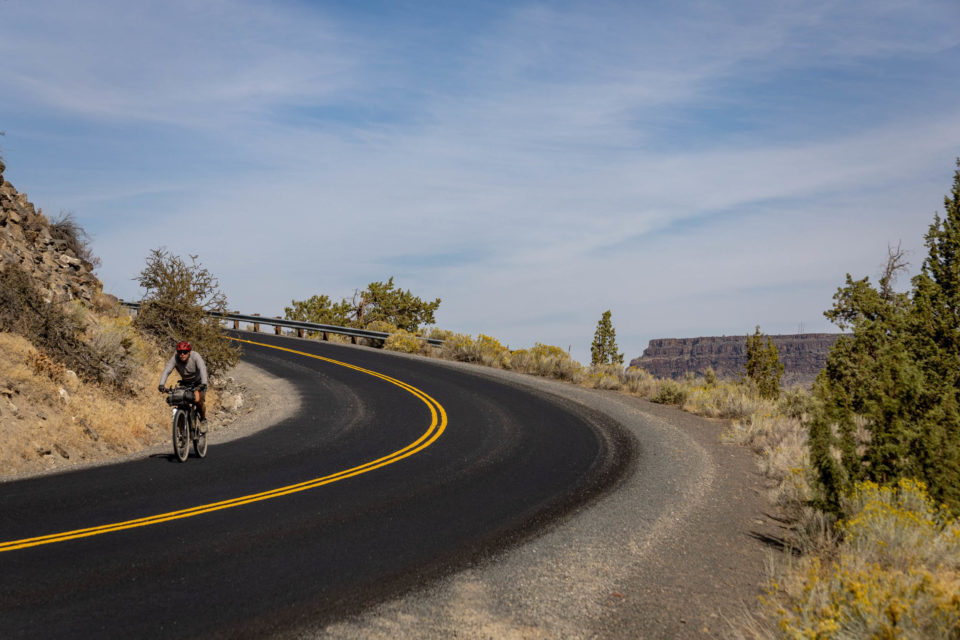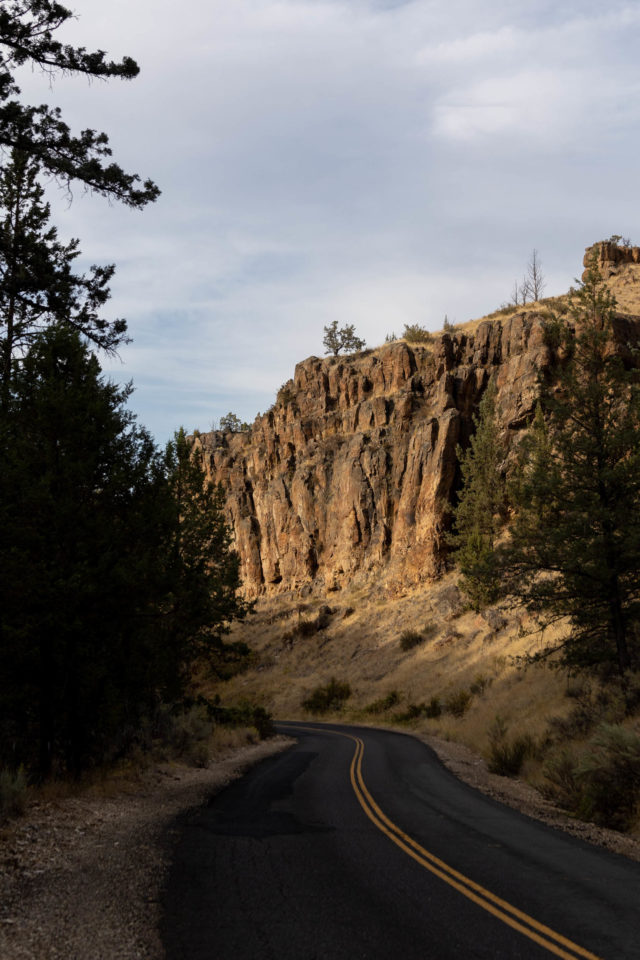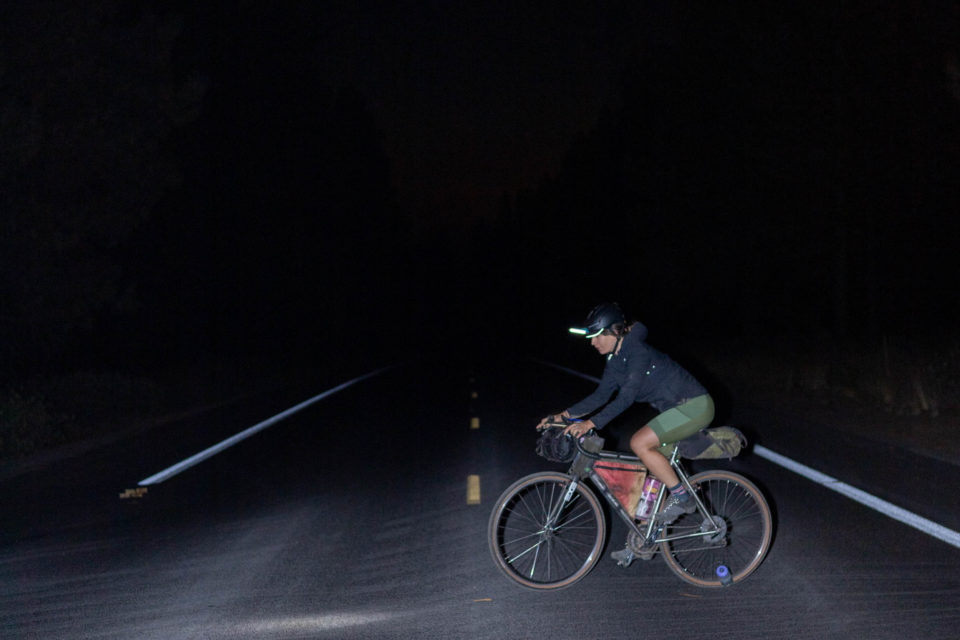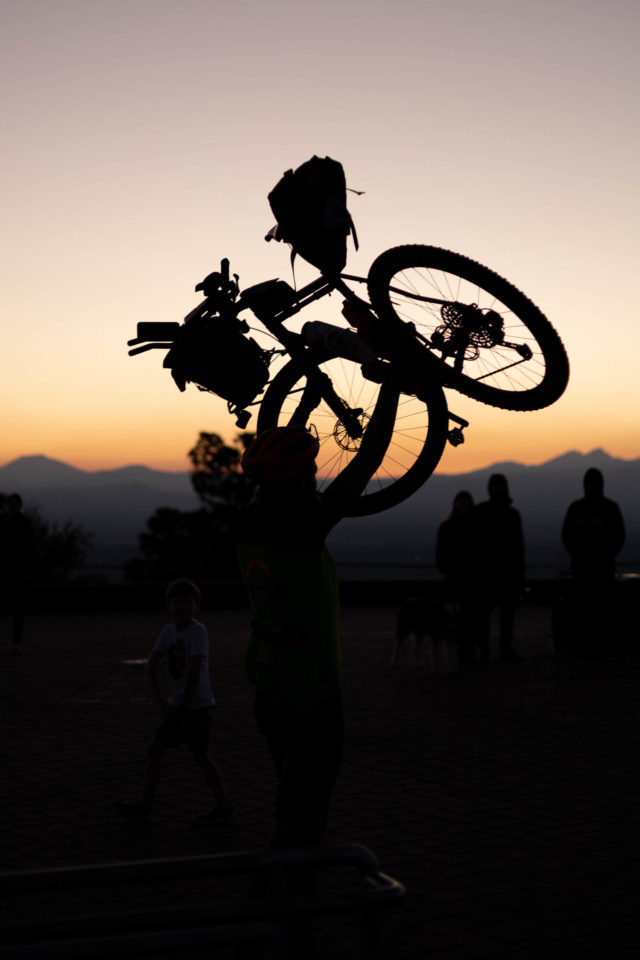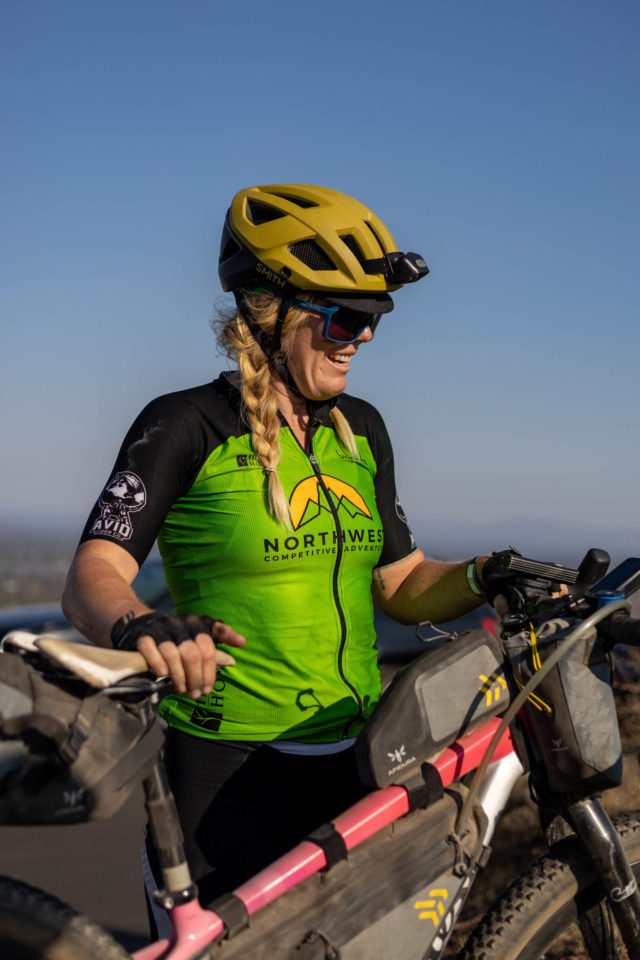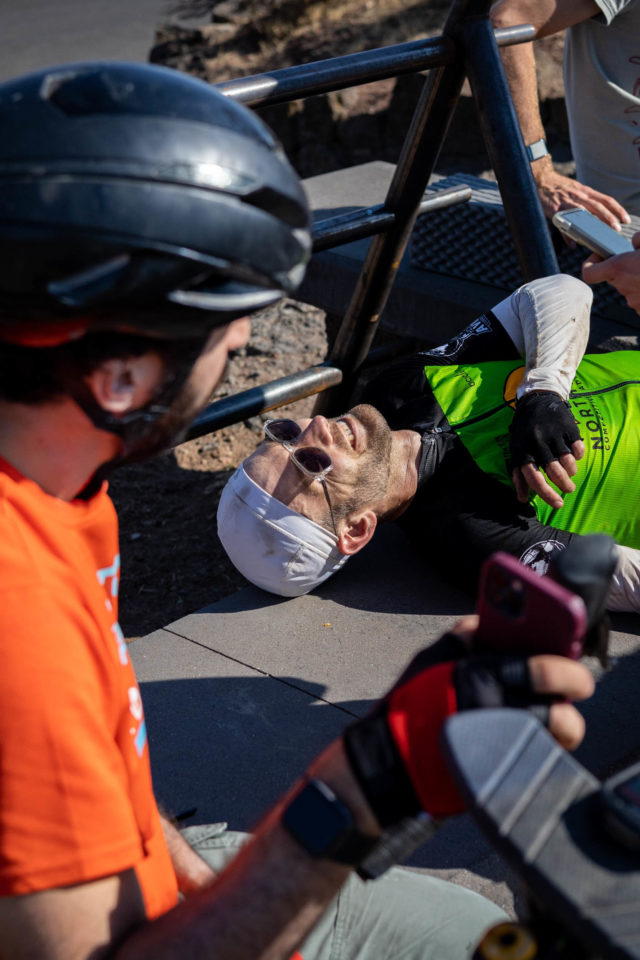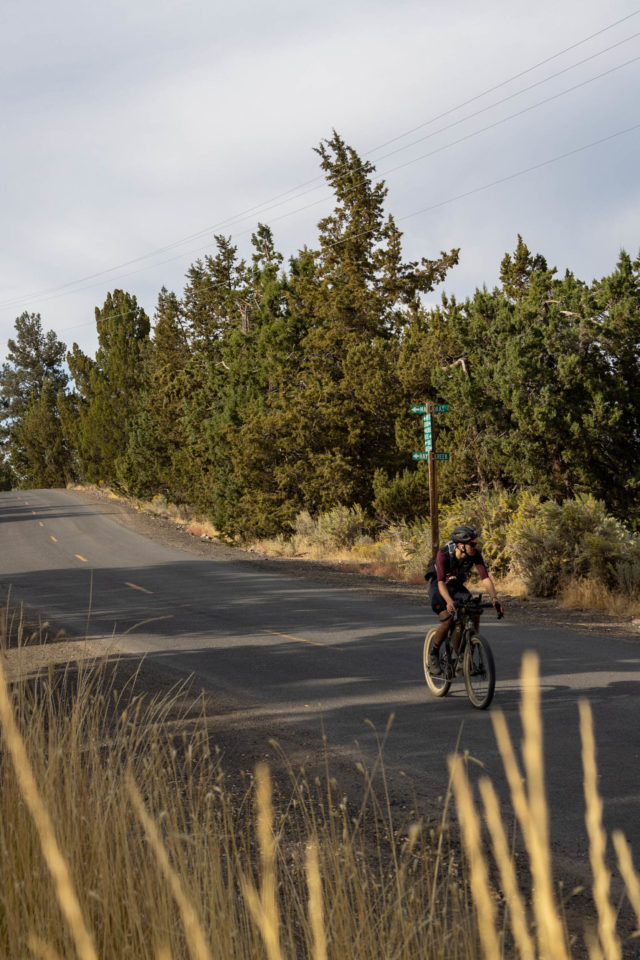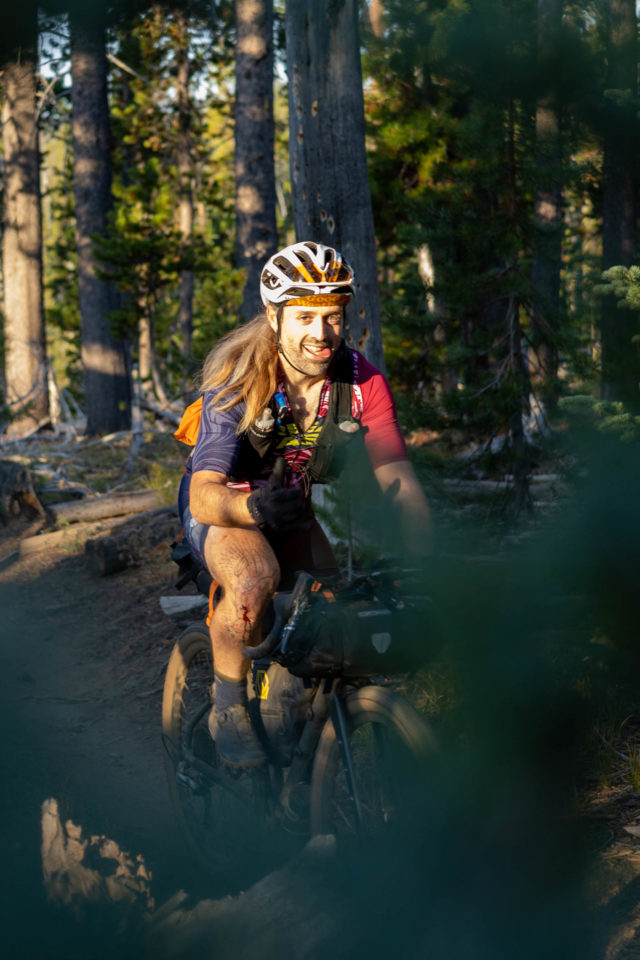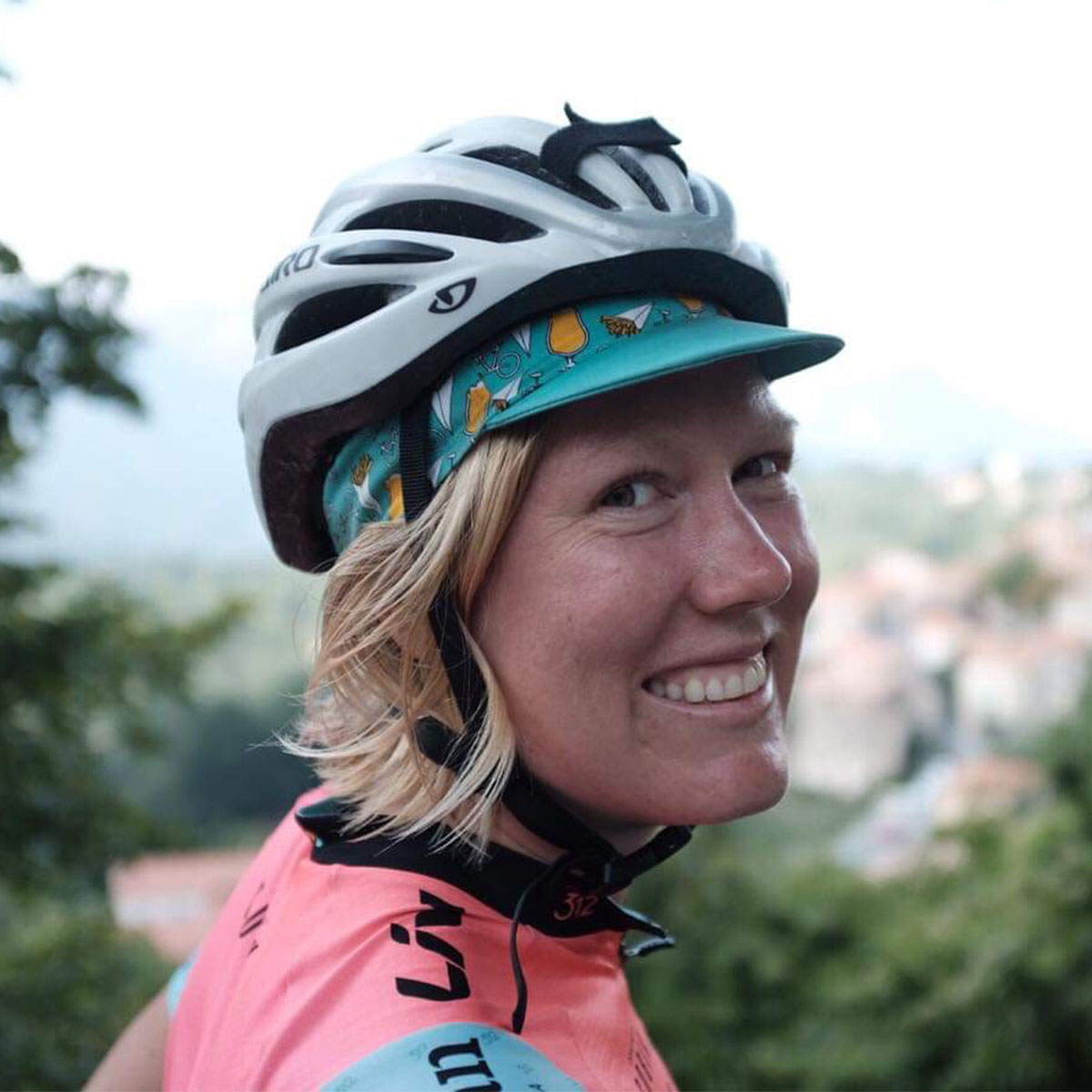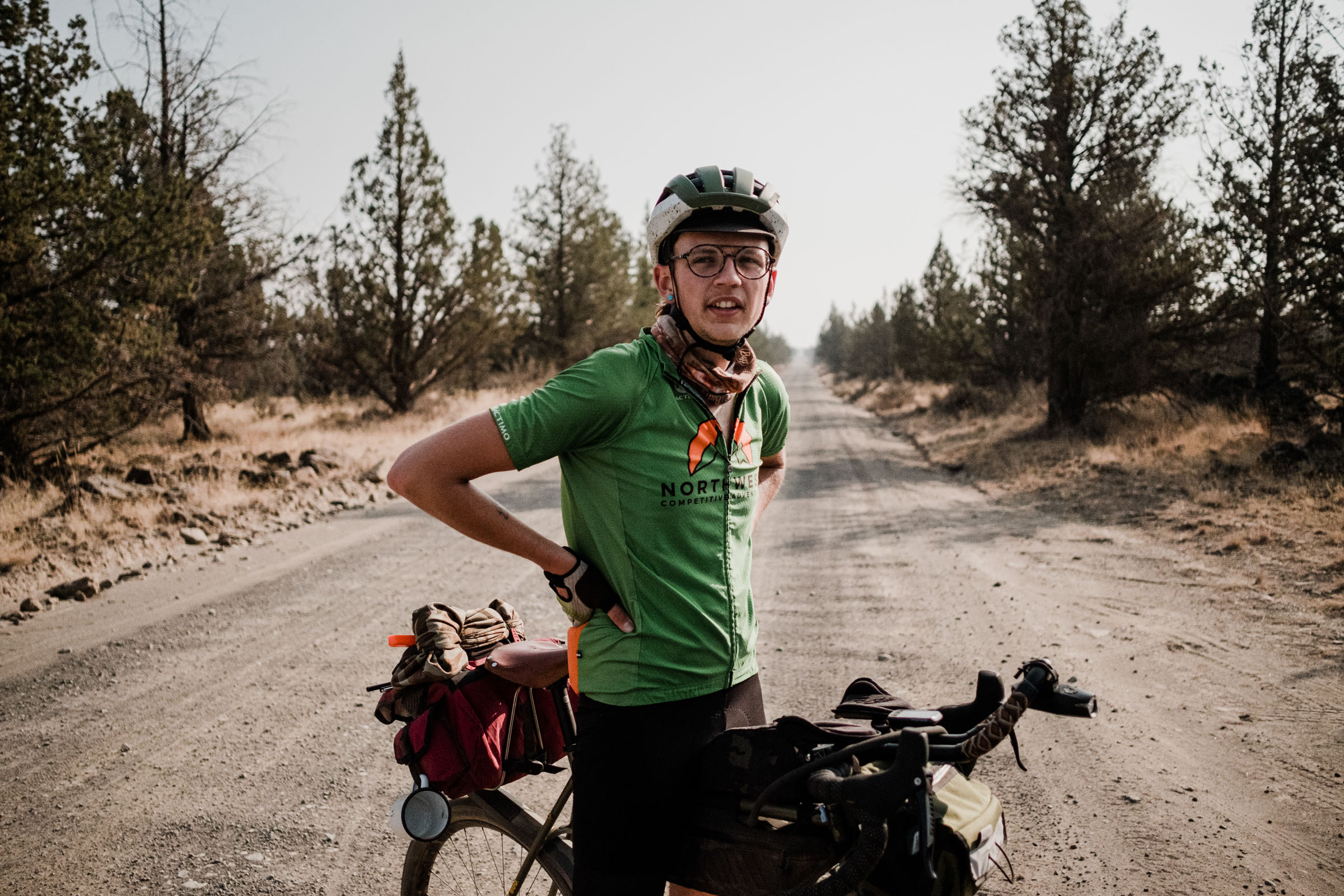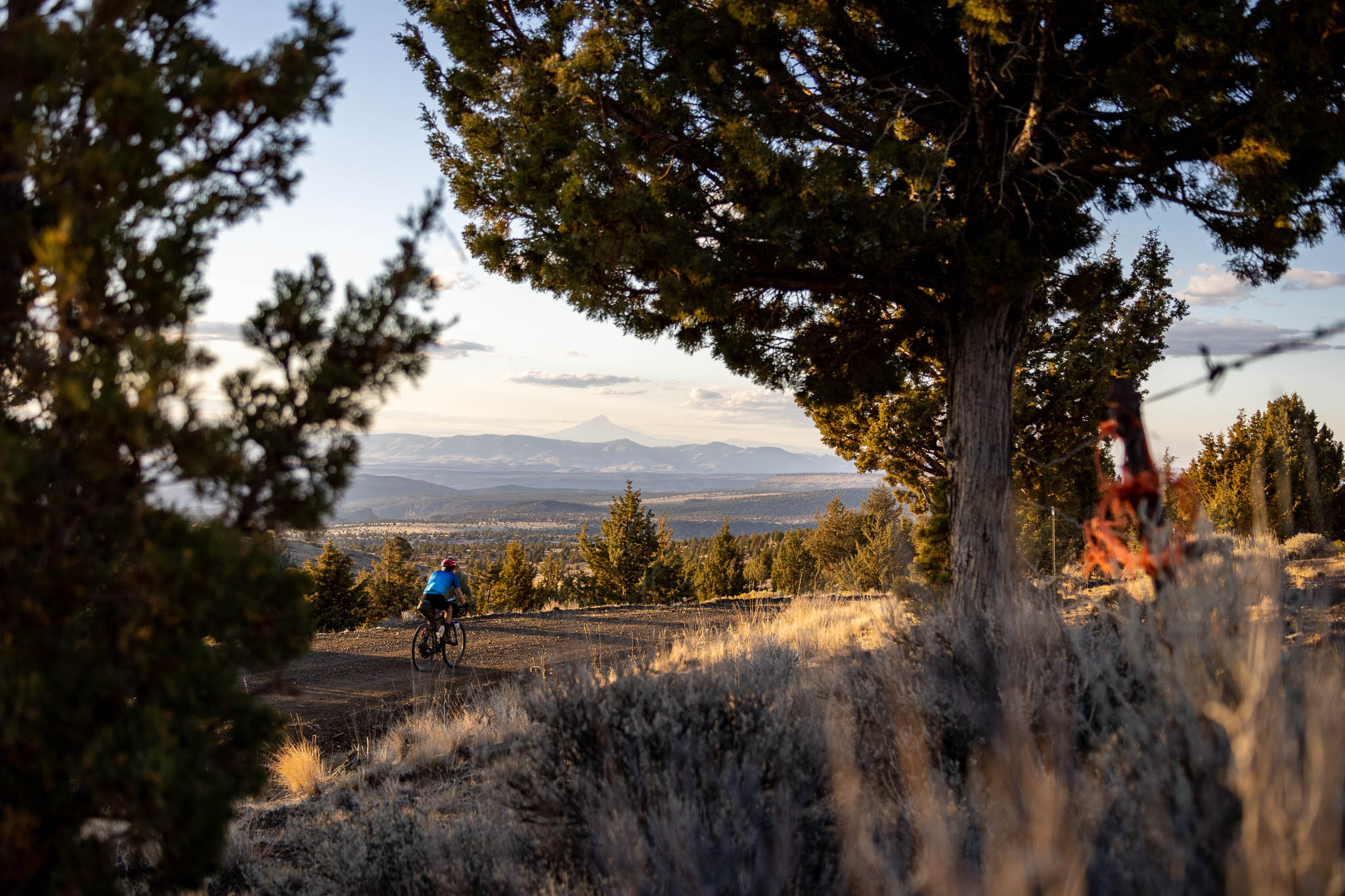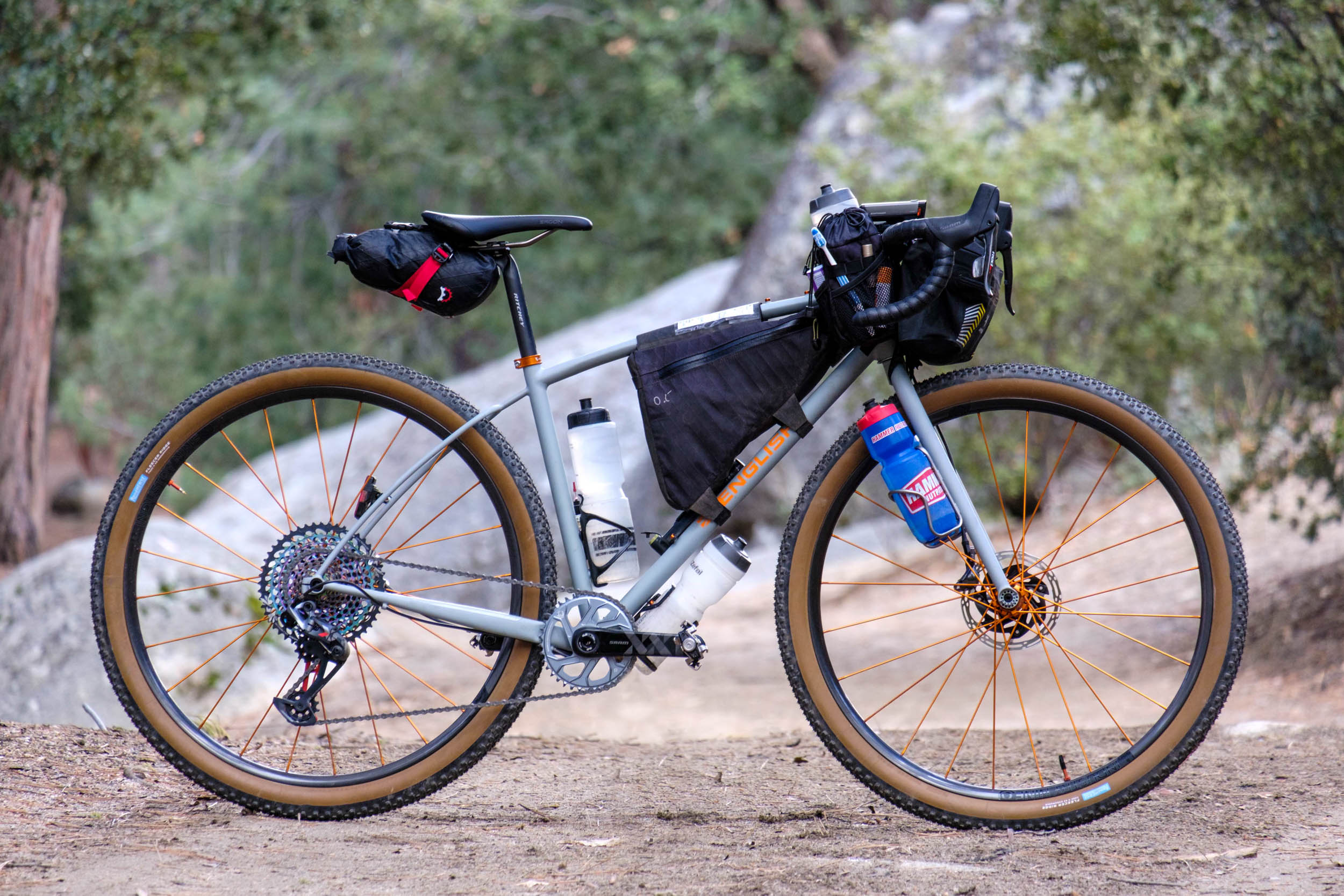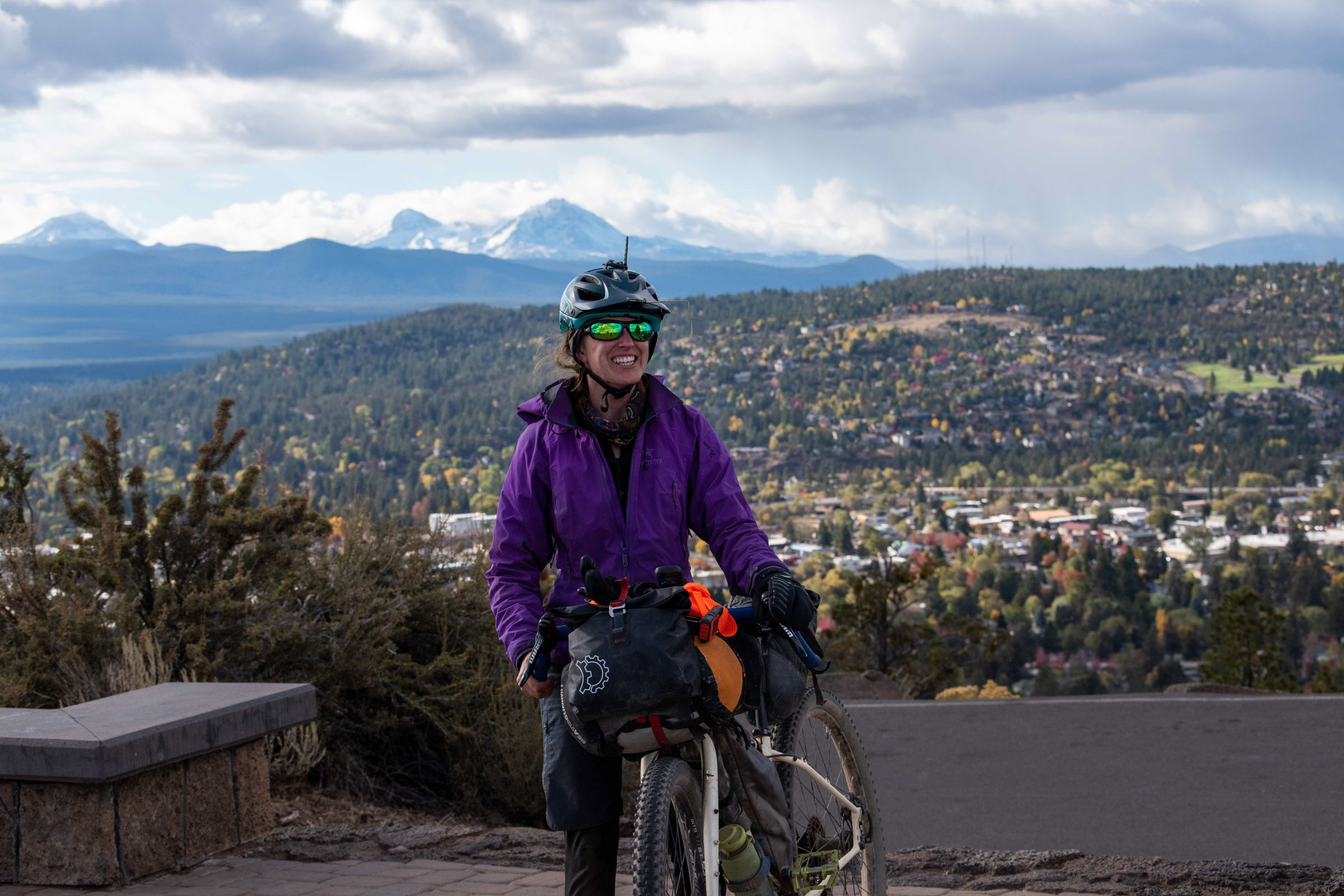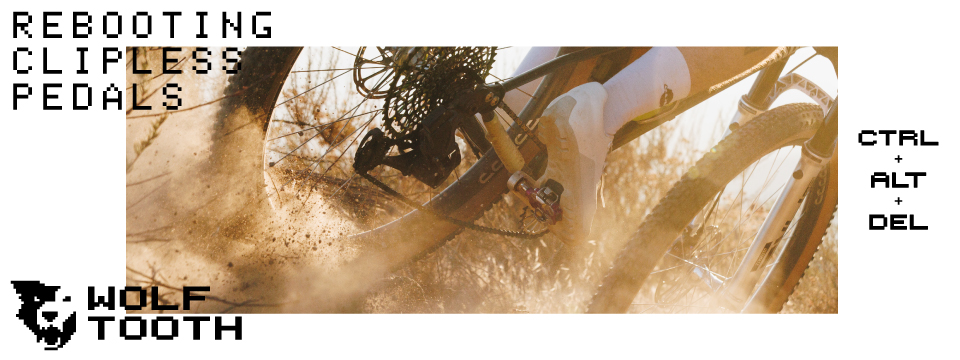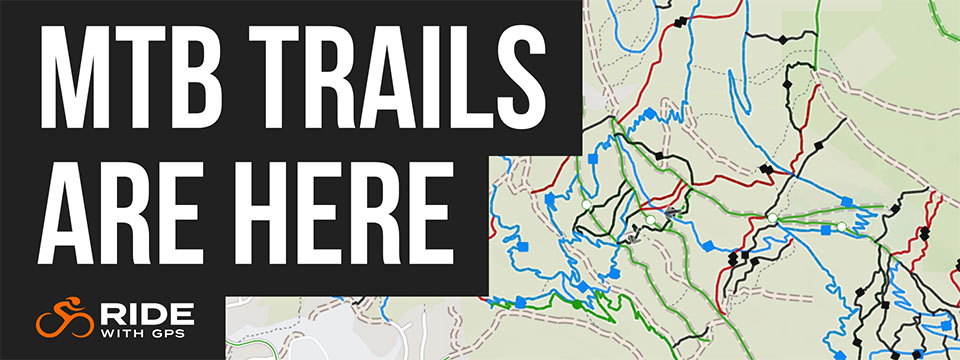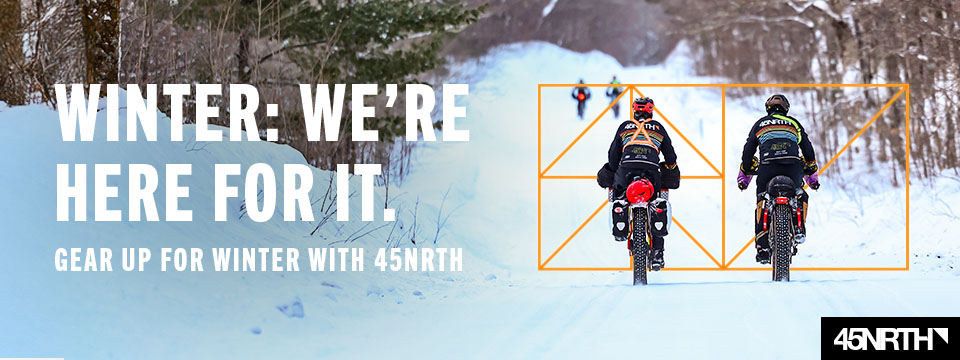The Big Lonely is an annual unsupported bikepacking adventure starting and ending in beautiful Bend, Oregon, that follows a 350-mile route on singletrack, gravel, and a touch of pavement. Out of more than 40 riders, Meaghan Hackinen took third place at the grand depart last fall. Find a recap from Meaghan and a selection of photos from Sean Dronia here…
Words by Meaghan Hackinen, photos by Sean Dronia
Day’s last light lingered on the crowns of ponderosa pines as I carved deeper into the Ochocos. Despite the steady grind, I relished my total immersion in dusky mountains, accompanied only by the wash of wind and the chuck of gravel beneath my tires as I stood to attack steeper grades. Soon, the woods would be swallowed by nightfall, and I’d have only my front beam and GPX track to guide me toward The Big Lonely’s next resupply in Prineville. I was 150 miles in, and I couldn’t believe things were still going according to plan.
The Big Lonely is a 347-mile unsupported bikepacking race that takes place in early October, looping around the beautiful beer and bike paradise of Bend, Oregon. The route ascends 26,000 feet to explore the diverse and expansive Central Oregon region on a mix 30% singletrack, 50% gravel/doubletrack, and 20% paved scenic bikeways. Riders climb the iconic Mrazek Trail in the Skyline Forest, ride along the Metolius and Crooked Rivers, summit the relentless Ochoco Mountains, and cross the high desert on a 30-mile ribbon of smooth singletrack. With limited resupply and large swathes inaccessible (or rarely frequented) by vehicle traffic, the route certainly lives up to its name.
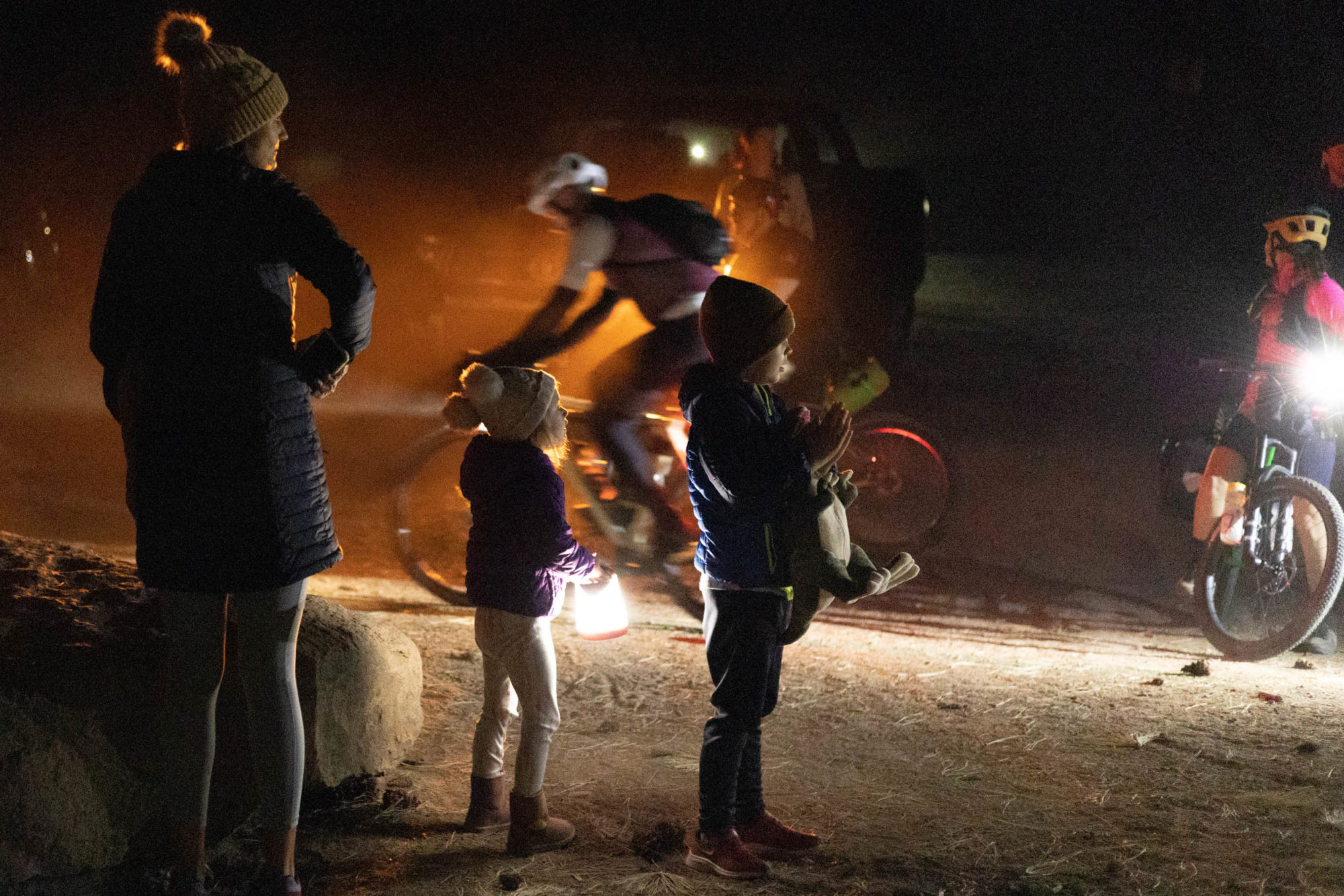
Near midnight, I pulled over at the first convenience store in Prineville, hands tingling from a frigid mountain descent. At just past the halfway point, the temptation to loiter was undeniable. Instead, I slammed an iced coffee and hopped back on my Salsa Cutthroat, pedaling hard alongside the Crooked River. Full moon hung like a disco ball, illuminating sharp canyon walls and dancing off the current’s ripples. Wonder mingled with excitement as I raced through the quiet beauty of the night, bearing a relaxed confidence that I hadn’t experienced in months.
I’d planned to arrive in Bend several days early to pre-ride the more challenging segments. Unfortunately, I was knocked out by a terrible cold the week prior, and my delayed departure didn’t leave time for route recon. This wasn’t the only occasion a wrench that had been thrown in my plans: I came down with COVID-19 in May, just before the Race Around Denmark; and a long-dormant knee injury flared up in August, preventing me from competing in Montana’s Big Sky Spectaculaire.
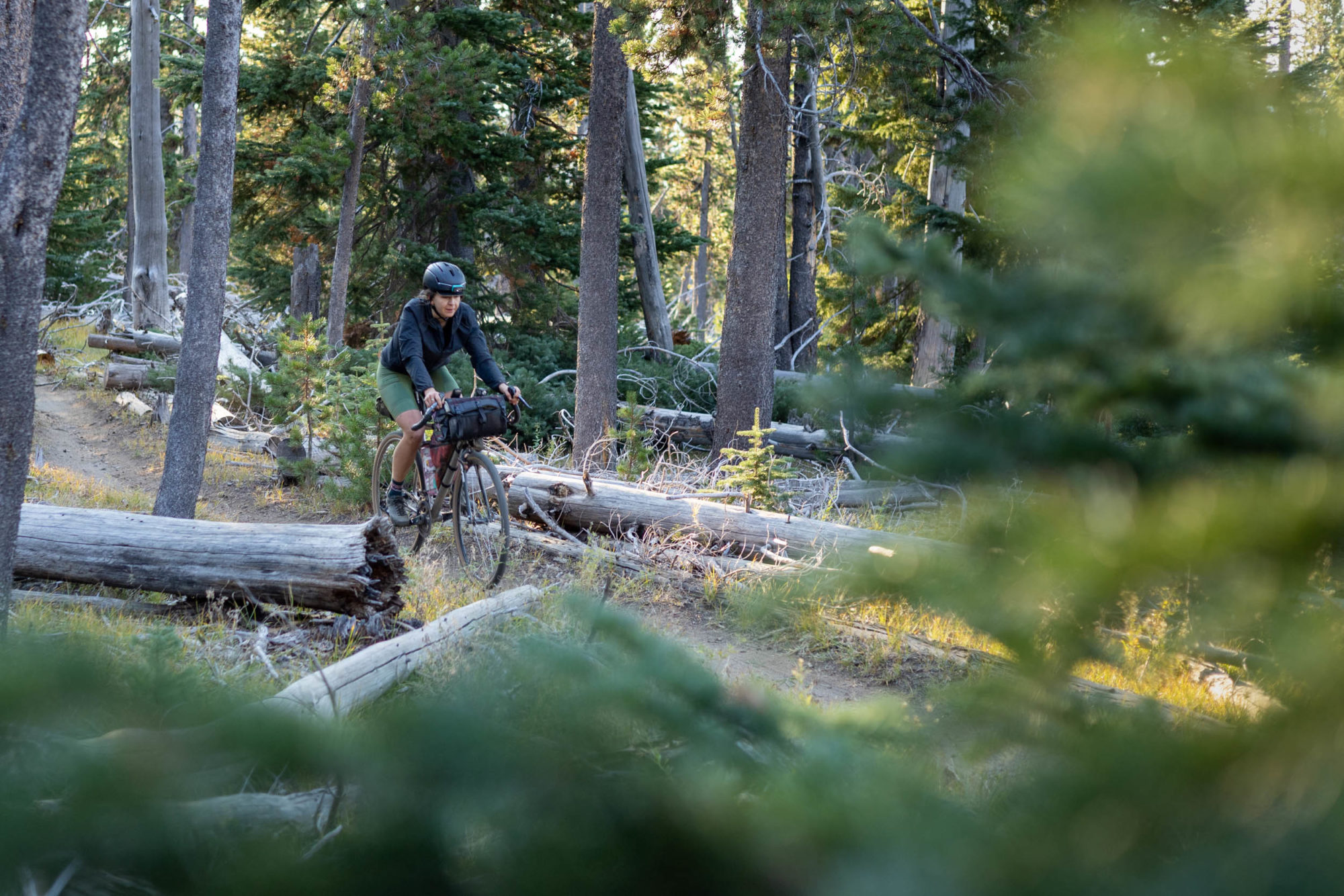
These were undoubtedly frustrating experiences—I’d been looking forward to the Race Around Denmark since first traveling through in 2019 during the NorthCape4000, and I drove 650 miles to the Big Sky’s start line before coming to terms with the fact I couldn’t possibly compete on a buckling knee the size of a pomelo fruit. However, neither compared to the aftermath of this summer’s Transcontinental Race, an event that shattered my confidence and tested my limits so thoroughly, I was left wondering what, if anything, I actually knew about bikepacking.
At the neutral water aid station, I learned that I was in third place. I’d unknowingly slipped past two riders in the high desert while they slept, and just two competitors remained ahead: Ben Handrich and Tom Schwemberger. With under 100 miles to go, I layered up, filled my water reservoir for the last time, and set off try and close the gap. As my wheels trudged through loose, chunky gravel on forest development roads, I glanced surreptitiously over my shoulder, squinting through the dark to detect—I was almost certain—the wobbling beacon of another rider’s front light.
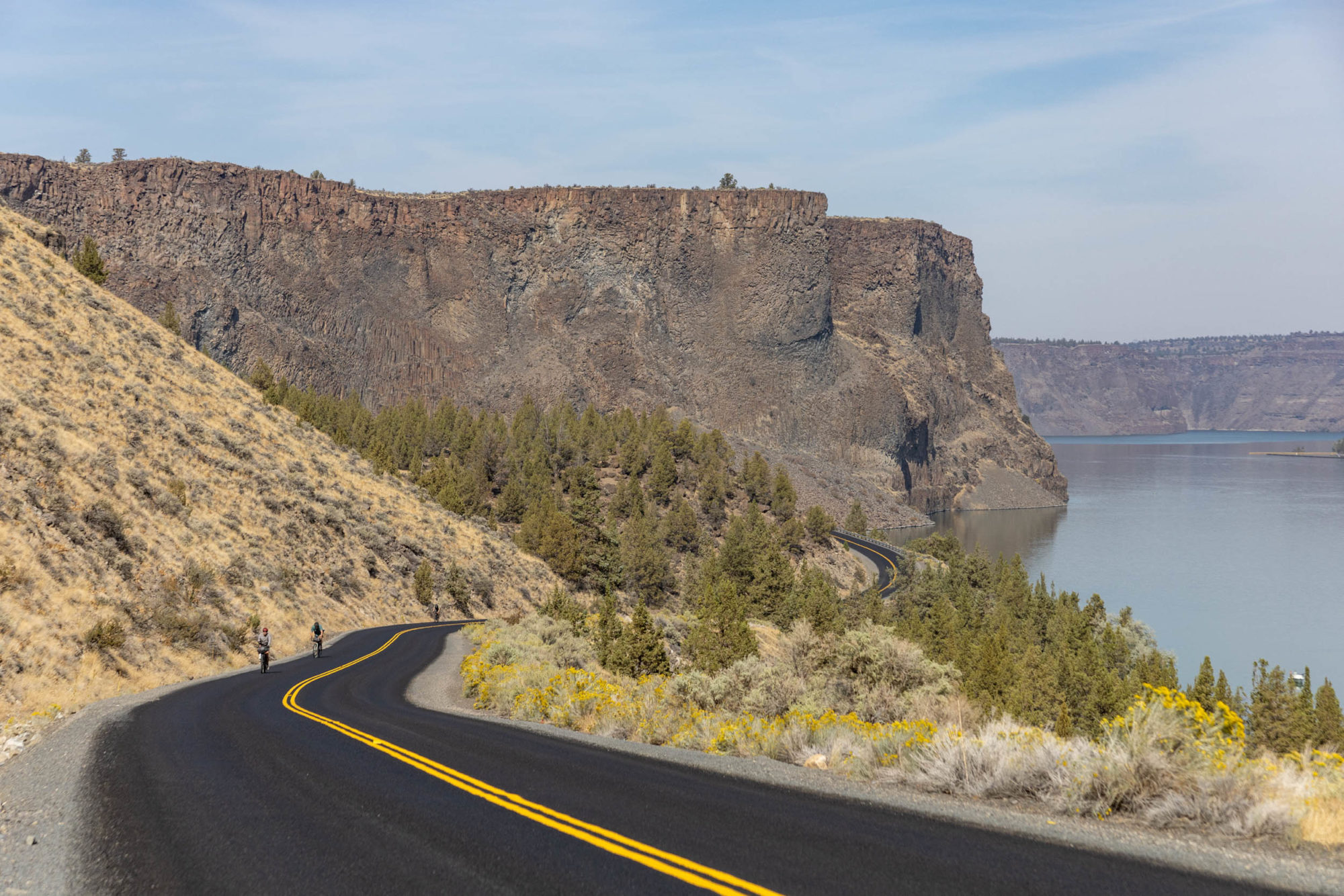
It is difficult to explain what happened during the Transcontinental. I made it to the finisher’s party with time to spare. From an outsider’s perspective, it was a clear success. Internally, however, I was a wreck. Constantly talking down and second-guessing myself as I bumbled from one poor decision to the next, appreciative of the incredible scenery but utterly overwhelmed, unable to shift from my floundering mental state.
I figured the Big Sky Spectaculaire would be my redemption. Instead, I ended up with a DNS, which only exacerbated my lingering doubts. Thanks to physio exercises and yoga, my knee was on the mend by the time I arrived at The Big Lonely in October, though I didn’t quite trust that I wouldn’t fall apart again when confronted by the countless obstacles of racing—guess I’d just have to find out.
At 10 a.m., I reached Paulina Peak, the high point at 7,900 feet. My eyes gravitated toward the sapphire-blue lake below, flanked by emerald forest. For a moment, I imagined a swift downhill to the finish—a fantasy abruptly quashed when I found myself navigating miles of technical singletrack amid volcanic rock and serpentine roots.
Don’t stop, I counseled myself. Just don’t stop moving. Whether coasting downhill or pushing my bike like an unruly shopping cart, it didn’t matter. If I maintained momentum, I knew I’d reach the finish.
After more than 33 hours in the saddle, I returned to Bend to climb the final paved ascent up Pilot Butte, a cinder cone rising nearly 500 feet above the surrounding plains. A collection of dot watchers, local bike enthusiasts, media crew, as well as Tom and Ben (who placed first and second, respectively), were there to celebrate. I finished third overall, besting Lauren Brownlee’s previous women’s FKT by nearly 18 hours.
For a bunch of strangers (and a few friends) to await my arrival meant so much. I didn’t expect a public gathering, and while I stumbled around—slightly bushed and definitely dehydrated—cheerfully accepting congratulatory high fives and hugs (including kudos from Lauren herself), the realization of how incredible it was to be part of the larger bikepacking community finally sank in.
While no one knew the play-by-play, or how especially important it was for me to finish strong, I recognized that as fellow adventure-seekers, every single person on Pilot Butte could relate on some deeper unspoken level because they had encountered these challenges themselves and emerged on the other side.
Within a 100-mile radius, the handful of people who could comprehend the scale of this endeavor were within arm’s reach or still out on the course. Looking back on the Transcontinental, perhaps if I’d been able to conjure the collective—step out of body to visualize the entire field facing off against similar challenges, separate but together—I might have found the invisible support structure I’d been lacking.
Related Content
Make sure to dig into these related articles for more info...
Please keep the conversation civil, constructive, and inclusive, or your comment will be removed.







